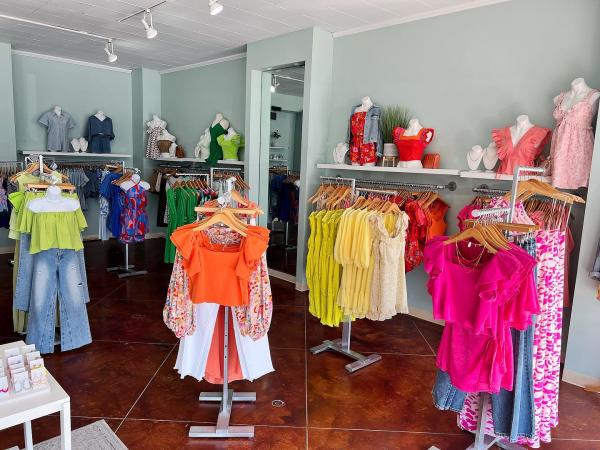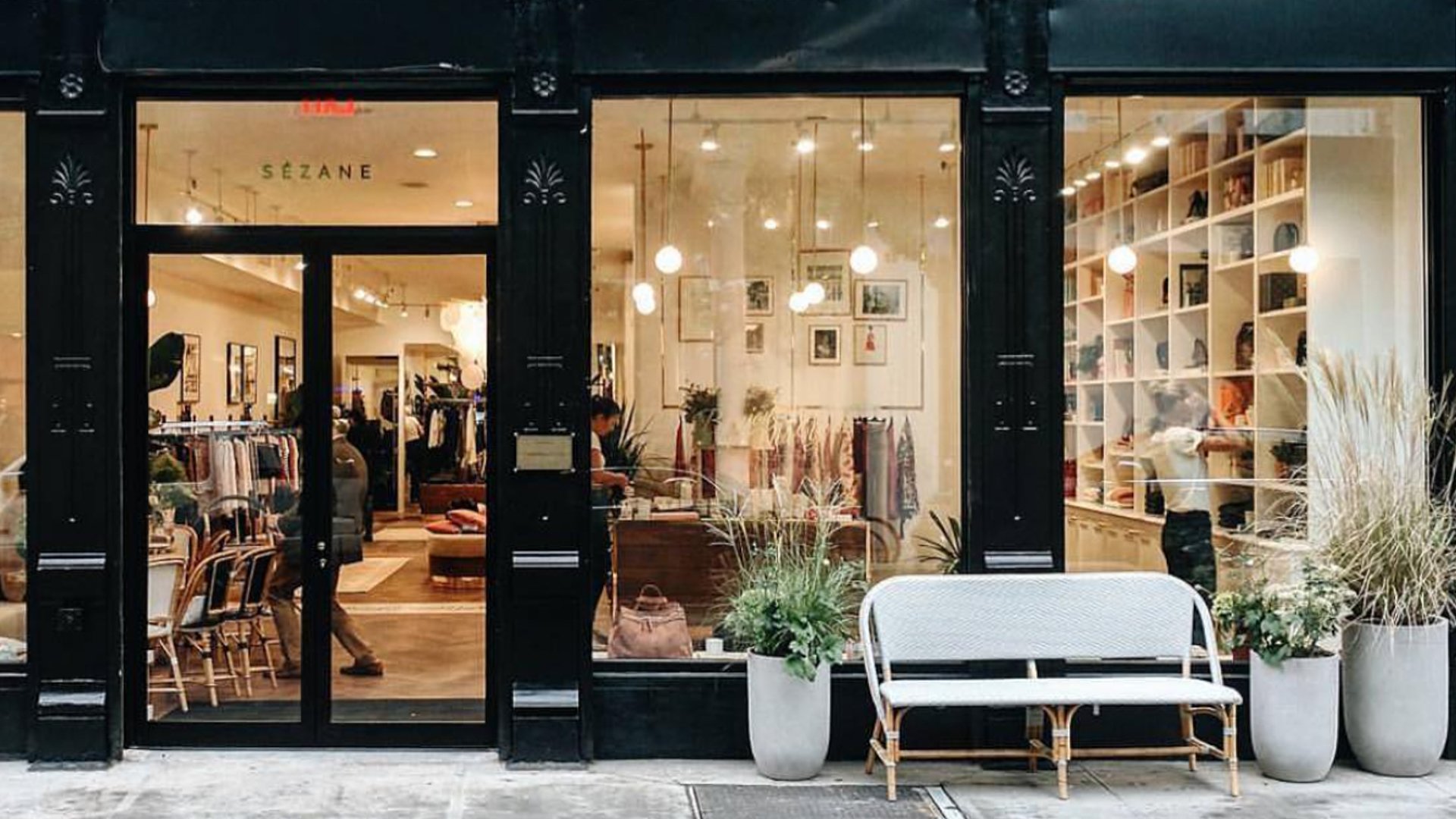Why Boutique Fashion is the Ultimate Choice for Unique Style
Why Boutique Fashion is the Ultimate Choice for Unique Style
Blog Article
Checking Out the Advancement and Impact of Garments on Modern Style Trends
The evolution of garments has actually significantly influenced contemporary style fads, merging historical precedents with innovative technologies. Iconic figures like Coco Chanel and Yves Saint Laurent transformed the style sector by presenting principles that prioritize comfort and ease of access, which continue to resonate today. Technical strides in locations such as 3D printing and clever fabrics are redefining layout opportunities and customer experiences (boutique fashion). In addition, the expanding focus on inclusivity and sustainability is improving sector criteria. As we take into consideration these complex impacts, one need to wonder about just how these aspects jointly redefine fashion's duty in mirroring and forming modern culture.
Historic Fashion Influencers
In the tapestry of fashion background, particular figures have left an enduring mark, forming the trends and designs that specify entire eras. Coco Chanel, a revolutionary developer, redefined ladies's fashion by presenting comfy, elegant clothing that left from restrictive bodices. Her famous Chanel suit and little black outfit have become classic staples in wardrobes worldwide. In A Similar Way, Christian Dior's post-war "Makeover" in 1947, with its celebration of feminineness with full skirts and cinched midsections, marked a go back to opulence and has actually remained to affect designers.
Elsa Schiaparelli is another essential number, renowned for her avant-garde styles that included surrealist art, working together with Salvador Dalí to produce wayward pieces that challenged standard visual appeals. Her ingenious use color and strong patterns resounds in modern fashion. Yves Saint Laurent, on the other hand, equalized haute couture with prêt-à-porter collections, bringing runway styles to the masses and setting a criterion for modern-day ready-to-wear lines.
These visionaries, to name a few, not only reinvented style in their times but also set withstanding fads that reverberate in today's apparel industry, giving a structure upon which modern designers remain to develop and introduce. Their traditions emphasize the relevance of creativity and daring in fashion's ever-evolving narrative.
Technological Innovations in Style
Among the dynamic landscape of the fashion business, technological improvements stand at the leading edge of technology, reshaping exactly how developers develop and customers involve with fashion. The integration of 3D printing has actually reinvented style procedures, enabling developers to explore complex structures and lasting materials that were formerly inconceivable. This modern technology assists in fast prototyping, reducing waste and expediting production times.

Smart fabrics, embedding innovation right into materials, are additionally transforming the market. Technologies like self-cleaning and temperature-regulating textiles offer improved capability and comfort. Wearable innovation, including features like physical fitness monitoring and communication, adds a new measurement to style, merging aesthetic appeals with usefulness.
Cultural Shifts and Style
As technological improvements remain to improve the garment industry, social changes are just as significant, Homepage redefining design and customer choices. In recent times, the surge of social media sites systems has actually increased the circulation of international style patterns, permitting diverse cultural impacts to exist side-by-side and merge. This electronic interconnectivity has actually assisted in the fast exchange of concepts, leading to a much more eclectic and comprehensive analysis of design that reflects the complex nature of modern-day society.
Social awareness and gratitude have actually motivated designers to draw ideas from a more comprehensive range of ethnic and historical contexts, incorporating standard concepts with modern aesthetic appeals. This fusion has led to fashion that resonates with a wider audience, promoting a sense of identification and belonging across different demographics. In addition, the boosting demand for customization has actually driven brands to offer personalized choices, enabling customers to reveal individuality while showing their cultural heritage.
In addition, moving societal worths have influenced fashion, with inclusivity and variety becoming main themes. The sector has started to embrace versions and influencers of various body types, ethnicities, and sex identities, difficult conventional appeal standards. This improvement underscores the power of social changes fit the future of fashion, as design becomes a much more genuine expression of personal and cumulative identification.
Sustainability and Modern Layout
While the fashion market proceeds to develop, the necessary for sustainability has actually come to be increasingly immediate, affecting modern-day layout techniques. The surge of slow-moving style, which emphasizes top quality over amount, urges customers to spend in ageless pieces rather than transient trends.
Furthermore, contemporary style is characterized by its development in reducing waste and promoting circularity. Techniques such as zero-waste pattern cutting and 3D knitting are obtaining grip, enabling designers to create garments with minimal textile wastefulness. In addition, brands are adopting clear supply chains, making certain liability and promoting consumer trust. This strategy not just reduces environmental influence however also boosts the social duty of fashion residences.

Future Trends in Style

Sustainability will certainly continue to be a driving pressure in shaping future style patterns. The sector is progressively adopting eco-friendly products and ethical manufacturing methods, replying to an expanding consumer need for responsible techniques. Developments such as bio-fabricated products and closed-loop recycling systems are readied to redefine just how clothes is generated and consumed, lowering environmental influence while maintaining design and quality.
Social changes, including the surge of inclusivity and diversity, will certainly also play an essential duty. As society comes to be more conscious of social concerns, style is expected to end up being a system for expression and change. Designers will likely concentrate on developing collections that reflect a wider variety of experiences and identifications, promoting depiction and ease of access.
Verdict
The development of garments dramatically influences modern-day style patterns, where historic influences merge with contemporary designs. This recurring advancement emphasizes style's function as a mirror to societal values and technological development, suggesting a future rich with technology and Check This Out inclusivity.
The advancement of apparel has actually substantially influenced modern style patterns, merging historical criteria with innovative advancements.In the middle of the dynamic landscape of the style market, technological advancements stand at the center of advancement, reshaping how developers produce and consumers involve with fashion.While the style market continues to advance, the imperative for sustainability has actually ended up being increasingly immediate, influencing modern-day style practices. As sustainability comes to be embedded in modern-day style, it leads the method for a much more responsible and aware fashion sector.
The development of clothing substantially impacts modern-day fashion fads, where historical impacts merge with contemporary layouts.
Report this page